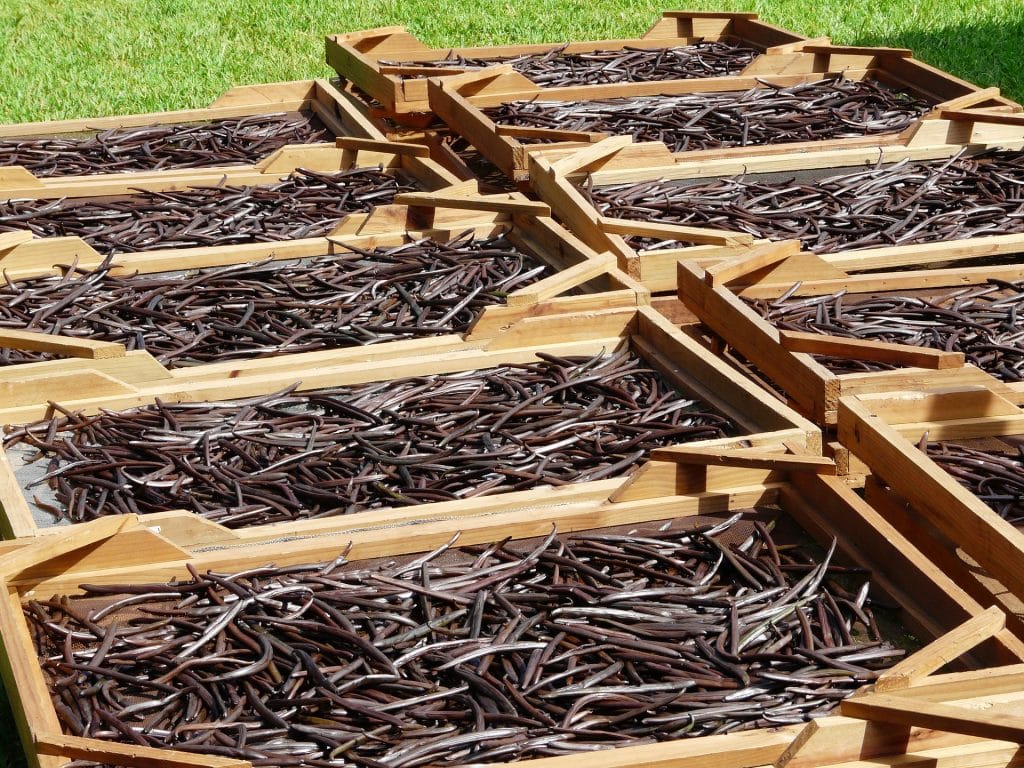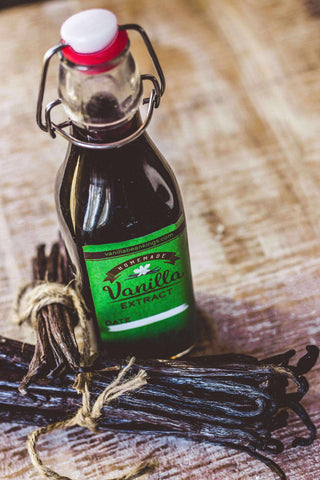That little jar of vanilla beans looks so innocuous in your pantry. Yet inside each bean lies a world of flavor waiting to impart its magic into your baked goods, custards, and other treats. With proper care, a vanilla bean can last up to 2 years or more from harvest to your kitchen counter. But what determines its shelf life, and how can you make your beans last?
In this guide we’ll cover everything about vanilla bean longevity, from optimal storage to signs of spoilage. Read on to learn how to extend the life of your vanilla beans and use strategies to maximize their years of service.
The Variable Shelf Life of Vanilla Beans
First, it’s important to understand there’s no absolute expiration date for vanilla beans. Their usable lifespan depends on several factors:
- Initial bean quality
- Harvesting and curing methods
- Storage conditions
- Package sealing and opening
- Moisture exposure
This means the same batch of vanilla beans can last different lengths of time under different circumstances. But generally, you can expect whole, untreated vanilla beans to last:
- 1-2 years stored optimally in a sealed container
- 6-8 months once opened from packaging
- 3-6 months if split or chopped
The shelf life shortens dramatically once exposed to air, light, and moisture. Let’s look closer at proper storage to extend that longevity.
The Importance of Proper Vanilla Bean Storage
To keep your vanilla beans fresh and flavorful as long as possible, storage conditions are key. Here are tips for ideal vanilla bean storage:
- Keep beans in an airtight, air-free container. Air exposure dries them out.
- Store in a cool, dark place around 60-68°F. Avoid temperature extremes.
- Maintain proper humidity around 62-65% to prevent drying without risking mold.
- Buy whole beans and split just before using to prolong freshness.
- Limit light exposure which degrades the beans. Use an opaque container.
- After opening, re-seal tightly in the jar and use within 6-8 months.
A root cellar, pantry, or basement offers the steady, moderate temperature and humidity beans need. Never refrigerate or freeze them With proper storage, you can keep vanilla beans fresh for up to 2 years from harvest
How to Tell If Vanilla Beans Have Gone Bad
Vanilla beans gradually lose moisture and flavor over time But how do you know if they’ve crossed the line into being unusable? Watch for these signs
-
Mold – Toss beans at first sight of mold. The moist inner cavities are prone to fungal growth.
-
Very dry and brittle – Vanilla beans become dry shells devoid of moisture and flavor.
-
Dark specks – Small brown/black spots on the bean surface signal rot setting in.
-
Odor change – A musty, rotting odor means the bean is spoiled.
-
No aroma – Beans without any fragrance left have lost their flavor potency.
-
Weeping droplets – Liquid oozing out indicates fermentation and spoilage.
-
Loss of pliability – Vanilla beans go rigid when almost all moisture content is gone.
Once you spot these warning signs, the vanilla beans should be discarded. They are past the point of salvage.
Reviving Old Vanilla Beans
What if your vanilla beans are still usable but have lost some of their moisture and potency? Try these tricks to revive old beans:
-
Bury them in a container of sugar to make vanilla sugar with gentle flavor.
-
Simmer the beans in milk or cream, then remove pods and use the infused dairy.
-
Chop up old beans and add to smoothies, oatmeal, etc. for flavor and fiber.
-
Use in longer cooking applications like braises, stews, and curries rather than baked goods.
-
Brew into vanilla extract to get the remainder of flavors and aromas.
With some creativity, you can often find uses for beans that are past their prime but not completely spoiled. The key is managing your expectations for their decreased flavor impact.
Maximizing Vanilla Bean Longevity
Now that you know about proper storage and signs of deterioration, here are tips for maximizing the precious shelf life of your vanilla bean stash:
-
Buy quality beans – Well-cured, high-grade beans have longer viability.
-
Store in glass – Glass containers are ideal for monitoring beans without imparting flavors.
-
Keep humidity around 65% – Use a hygrometer and employ humidity packs if needed.
-
Open just before use – Keeping beans sealed gives you the full shelf life.
-
Split lengthwise – Cut rather than scrape to expose more seeds and flavor.
-
Re-seal after opening – Limit air exposure by sealing tightly after each use.
-
Use quickly after opening – Plan to use opened beans within 6-8 months.
With optimal storage and handling, you can keep your beans fresh for up to 2 years from harvest. A small investment in TLC goes a long way!
Frequently Asked Questions
Here are answers to some common questions about vanilla bean shelf life and storage:
How long do vanilla beans last after opening?
After opening, vanilla beans will stay fresh for 6-8 months if stored properly in an airtight container.
Can you freeze vanilla beans to extend their shelf life?
Freezing is not recommended, as the thawing process damages the bean’s cell structure. Refrigeration can also do more harm than good for raw beans.
Do all vanilla beans have the same shelf life?
Shelf life depends on many factors like curing method, storage, and bean grade. But 1-2 years from harvest is typical for quality beans stored optimally.
What’s the best way to store vanilla extract or paste?
Vanilla extract stores well at room temperature for 2-3 years. Vanilla bean paste should be refrigerated and used within 1 year after opening.
How can you tell if opened vanilla beans have expired?
Signs that opened beans are past prime include dryness, darkened tips, loss of pliability, and weakening aroma. Trust your senses!
Vanilla Beans Are a Precious Resource
Vanilla beans impart an irreplaceable floral perfume and complex flavor that no artificial vanilla can truly mimic. With proper TLC, you can keep your beans fresh for up to 2 years from harvest and enjoy them to the last drop.
Know the signs of deterioration, revive old beans when possible, and store them optimally. Your tastebuds will thank you for valuing these precious gems of the spice world!

What Is the Shelf Life of Vanilla Beans?
Vanilla beans can last upwards of two years if stored properly. They’re not the kind of beans that go bad when they go bad; instead, they tend to dry out.
The beans may still be safe to use after their expiration date, but they won’t smell or taste good. This is because as vanilla dries or ages, its flavor compounds degrade significantly.
No matter how long vanilla beans last in general, we always suggest using them as soon as possible, preferably within 6 to 8 months. Why? Because this is their golden period when you can truly enjoy the intense, fresh vanilla flavor.
Optimal Vanilla Bean Storage Conditions

Please hold on, because we are about to reveal the most important tips for storing vanilla beans! These pods need specific conditions—four in fact—to keep their vanilla goodness for as long as possible.
When you get your fresh vanilla pods, they should be moist, bendy, and smell strong. If they aren’t, you should talk to the supplier about it. Thats the state we want to maintain, and it all starts with proper packing that keeps air out.
Air is your number one enemy as it accelerates the drying of the beans. To prevent air from reaching your vanilla beans, we recommend keeping them in a BPA-free vacuum-sealed bag.
When you buy our premium vanilla beans, they come in a custom BPA-free pouch that has been sealed with a commercial chamber sealer to 28HG perfection. For long term storage, you should have a vacuum sealer to reseal the bag after use.
You can protect the beans with wax paper and use a glass bottle or jar that is just the right size for them if you need to. This helps the beans remain as much moisture as possible.
Keep your packaged vanilla beans in a dark place away from direct sunlight. Thats because bright sunlight exposure can severely degrade their quality. Your pantry or cupboard will make the perfect hideaway.
Don’t forget that putting the pods in dark packaging won’t protect them from light damage. You’ll still need to hide them.
Extreme temperatures, whether hot or cold, are trouble for vanilla beans. Avoid storing them in rooms subjected to high levels of heat and, most importantly, refrigerators.
If you put vanilla beans in the fridge or freezer, they will lose any moisture and may even help a mold that only grows on vanilla beans grow. All vanilla beans, extracts, pastes, etc. should be kept in a dry space away from direct sunlight.
Spices like vanilla should be kept in a dry room that is between 60°F and 85°F whenever possible.
You shouldnt allow moisture to accumulate inside the container. Just as we mentioned above, humidity equals mold, and thats not good.
Every few weeks, open the vanilla beans’ container for 10 to 15 minutes to keep moisture from building up. This will allow enough air to circulate without over-drying the beans.
